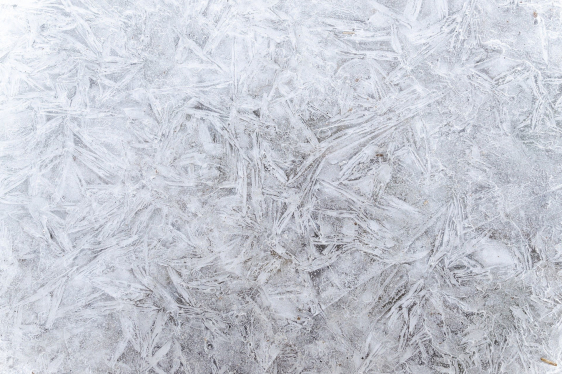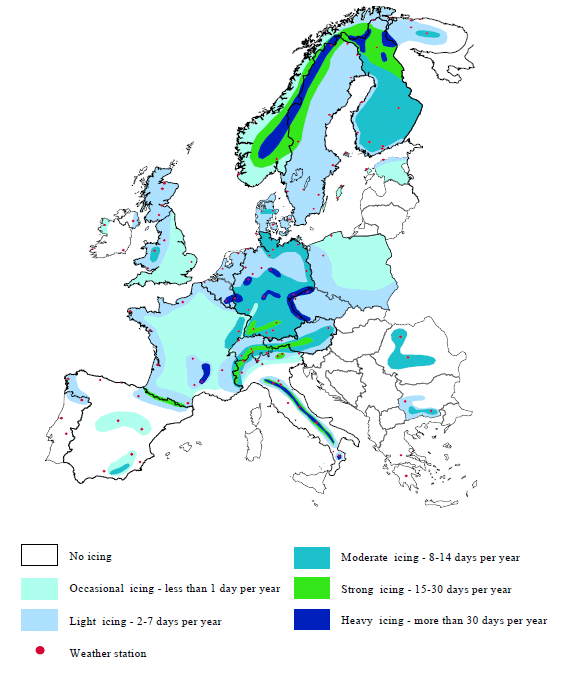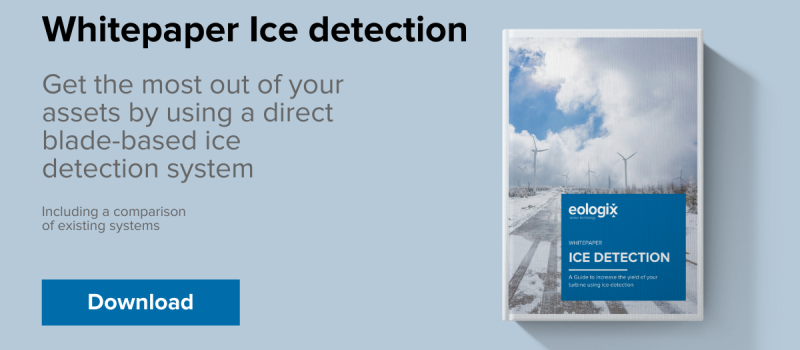TECHNOLOGY | 5 MIN TO READ
Dangers and risks due to ice accumulation on wind turbines
Whitepaper: Optimise your wind turbine by using ice detection

Minimise risks such as ice throw and increase yield with ice detection and temperature measurement directly on the rotor blade surface
The risk factor: icing
A wind turbine is designed to be used for at least 20 years, sometimes even up to 30 years. During its lifetime, it should reliably deliver maximum energy yield with the highest possible technical availability and at the same time independent of environmental influences.
A multitude of natural forces act on a wind turbine, including storms, heavy rainfall, hail, lightning, icing, etc. We want to take a closer look at the risk factors of icing.
Temperatures around freezing point in combination with high humidity, fog or rain: these weather conditions can lead to ice formation on the rotor blades of wind turbines. This can have far-reaching consequences in the ongoing operation of the turbine, but also lead to further consequential damage to the wind turbine. Possible consequences of ice formation on wind turbines are outlined below:
- Ice accumulation leads to poorer aerodynamics and therefore to a loss of power
- Ice throw and ice fall from wind turbines can endanger nearby people and surrounding infrastructure
- Ice formation usually leads to an automatic shutdown of the wind turbine – unless the shutdown is prevented, e.g. by activating a blade heater – this necessary signal can be emitted with eologix:heat
- Additional loads and imbalances caused by ice can accelerate material fatigue
- Loss of performance due to downtimes
- Regulations or conditions require precautionary actions – e.g. plant shutdown to ensure continued safety (varies depending on different factors, such as location).
Where does icing occur?
Icing of surfaces is a ubiquitous problem in nature in certain areas of the world, causing high costs and affecting function and safety. The areas where new wind turbines are built are also increasingly expanding into colder regions, so-called cold climates, making the icing factor an increasing problem.

Figure: Published in 2000, Wind energy production in cold climate (WECO)
You can find out how icing occurs, which phases of icing there are and what specifically matters in our white paper Ice detection to optimise your wind turbine.
The 3 biggest dangers and risks with icing of wind turbines
As already shown, ice accumulation on rotor blades and/or the nacelle can lead to various consequences. These supposedly greatest dangers can be summarised as follows:
Loss of performance

Ice throw and ice fall

Imbalances

What is meant by the term ice throw or ice fall?
What is the difference?
The term ice throw in wind turbines refers to the detachment of pieces of ice during the operation of a wind turbine. In contrast, the term “ice fall” or “ice drop” is understood to mean the detachment of pieces of ice from a stopped wind turbine.
Do you want to know more about the 3 risks?
In the next blog posts, we will again look in detail at the individual three risks associated with ice accumulation, namely power loss, ice throw and ice fall and imbalances.
Minimise the economic and technical consequences with direct ice detection and temperature measurement on the rotor blade
eologix systems, which enable ice detection and temperature measurement directly on the blade surface of wind turbines, ensure smooth operation in icing conditions up to fully automatic operation in icing conditions.
eologix sensor technology gmbhH offers ice detection systems with direct measurement on the rotor blades based on capacitive sensor technology and stands for ice detection and temperature measurement directly on the rotor blade surface. When selecting a system for ice detection, various factors have to be considered, such as calibration and flexibility of the solution. Here is an overview of 6 relevant factors to consider when purchasing an ice detection system.
Therefore, eologix offers systems consisting of one receiver unit per plant and flexible, energy-autonomous and precise sensors, which are mounted directly on the rotor blade surface. Learn more about the our systems here.







